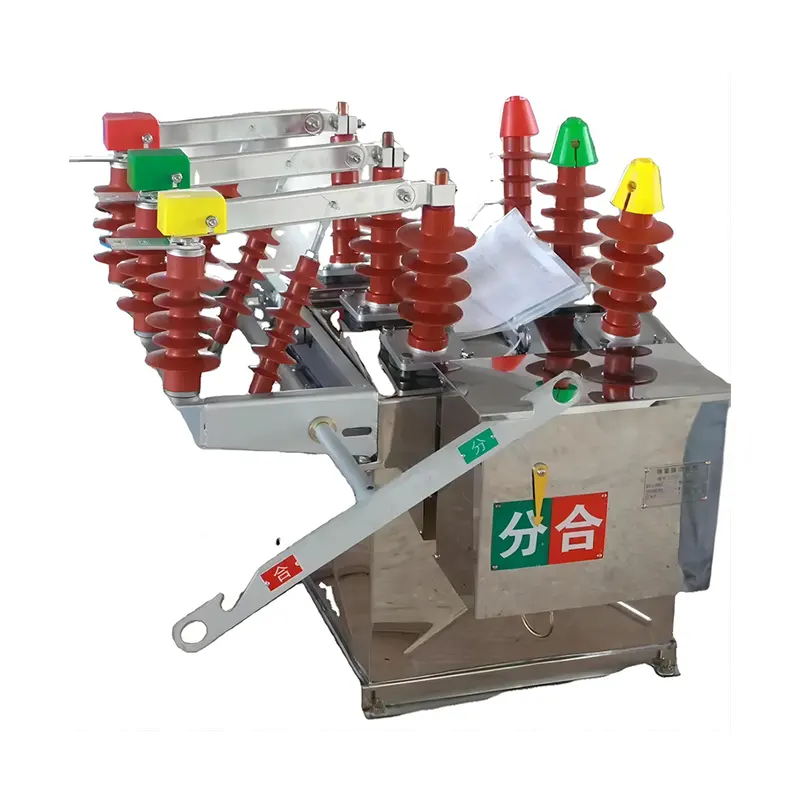 English
English Español
Español  Português
Português  русский
русский  Français
Français  日本語
日本語  Deutsch
Deutsch  tiếng Việt
tiếng Việt  Italiano
Italiano  Nederlands
Nederlands  ภาษาไทย
ภาษาไทย  Polski
Polski  한국어
한국어  Svenska
Svenska  magyar
magyar  Malay
Malay  বাংলা ভাষার
বাংলা ভাষার  Dansk
Dansk  Suomi
Suomi  हिन्दी
हिन्दी  Pilipino
Pilipino  Türkçe
Türkçe  Gaeilge
Gaeilge  العربية
العربية  Indonesia
Indonesia  Norsk
Norsk  تمل
تمل  český
český  ελληνικά
ελληνικά  український
український  Javanese
Javanese  فارسی
فارسی  தமிழ்
தமிழ்  తెలుగు
తెలుగు  नेपाली
नेपाली  Burmese
Burmese  български
български  ລາວ
ລາວ  Latine
Latine  Қазақша
Қазақша  Euskal
Euskal  Azərbaycan
Azərbaycan  Slovenský jazyk
Slovenský jazyk  Македонски
Македонски  Lietuvos
Lietuvos  Eesti Keel
Eesti Keel  Română
Română  Slovenski
Slovenski  मराठी
मराठी  Srpski језик
Srpski језик
What Is the Purpose of a Vacuum Circuit Breaker?
2024-07-16
Vacuum circuit breakers are ubiquitous in power systems and industrial applications as they provide a reliable and efficient means of electrical switching. Their advantages are numerous, ranging from their straightforward design, compact form factor, exceptional longevity, and unparalleled reliability. Moreover, their eco-friendliness stands out, eliminating concerns about arc pollution, noise generation, and radiation emission.
1. Safeguarding Against Power Outages
In high-voltage power systems, vacuum circuit breakers serve as a vital line of defense. By swiftly halting the flow of current during unexpected power disruptions, they shield transformers, generators, cables, and other critical electrical infrastructure from potential harm, thereby preserving the stability and continuity of the power grid.
2. Overcurrent Mitigation
In the face of overcurrent situations that could threaten the integrity of electrical devices, vacuum circuit breakers swiftly intervene. By disconnecting the circuit within fractions of a second, they prevent equipment from being overwhelmed and damaged, safeguarding both the devices and the overall power system's smooth functioning.
3. Grounding Safety Barrier
Grounding protection is crucial for minimizing the risk of electric shock to personnel. By incorporating vacuum circuit breakers into grounding circuits, a robust defense mechanism is established. Should an electrical fault lead to a surge in leakage current, these breakers instantly trip, severing the circuit and ensuring the safety of those nearby.
4. Swift Response to Short Circuits
Short-circuit incidents pose a significant threat to electrical equipment and cables, often leading to overheating and damage. However, vacuum circuit breakers prove to be a formidable shield. By rapidly detecting and disconnecting the circuit in the event of a short circuit, they prevent equipment from being pushed beyond its limits, preserving its integrity and ensuring the continued stability of the power system.




